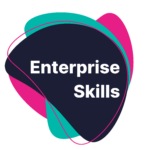Syllabus: SQA - Higher Course Spec Economics
Module: Economics of the Market
Lesson: Decision Making
Jump to Section:
Introduction
In the SQA Higher Business Management course, the “Understanding business – Decision making” strand sits at the heart of how students engage with the structure, purpose, and functions of businesses. This part of the course supports learners in understanding how internal and external environments influence the decisions that organisations must make to remain viable and competitive. Fully aligned with the SQA’s Higher Business Management specification, it builds foundational knowledge and critical thinking needed for students to navigate the challenges businesses face in real-world contexts.
Key Concepts
Students are expected to understand and apply the following:
-
Types of decisions: Strategic, tactical, and operational — and who makes them within an organisation.
-
Decision-making models: Including SWOT analysis and the decision-making process (identify, gather, analyse, choose, implement, evaluate).
-
Internal factors: Resources, staff expertise, corporate culture, finance, technology.
-
External factors: Political, economic, social, technological, environmental, and legal (PESTEL).
-
Stakeholders: Interests, influences, and conflicts in business decision-making.
-
Objectives: How corporate aims guide and constrain decisions.
These are interlinked with the broader “Understanding business” outcomes, encouraging students to evaluate how and why decisions are made and the impact they have on business success.
Real-World Relevance
Decision-making isn’t abstract — it plays out daily in every business. For example:
-
Tesco’s response to inflation: Shifting supplier contracts and revising product ranges based on cost pressures and customer buying habits.
-
Scottish SMEs navigating Brexit: Adjusting logistics, suppliers, and staffing due to regulatory changes.
-
ASOS’s supply chain shifts: Moving warehouse operations in response to growth and demand forecasting.
These scenarios show students how theoretical frameworks like PESTEL or SWOT help explain actual business decisions and outcomes.
How It’s Assessed
Assessment for this unit includes both internal and external components:
-
Exam questions often use command words such as describe, explain, analyse, discuss, and evaluate. Understanding what these words require is crucial.
-
Case-study based questions test students’ ability to apply decision-making models to realistic scenarios.
-
Higher-order thinking is required — particularly in justifying decisions and evaluating their consequences using evidence.
SQA examiners expect answers that show structured reasoning, link back to business aims, and consider both internal and external influences.
Enterprise Skills Integration
Decision-making links directly with key enterprise and employability skills:
-
Problem-solving: Identifying root causes and evaluating options.
-
Critical thinking: Weighing up competing priorities or stakeholder interests.
-
Initiative: Taking ownership of outcomes in uncertain contexts.
-
Collaboration: Many decisions involve working with others to gather evidence or gain consensus.
Bringing decision-making to life through simulation tools or scenario-based group work can develop these competencies in meaningful, practical ways.
Careers Links
This content maps strongly to Gatsby Benchmarks 4 and 5, especially when paired with employer engagement or case studies:
-
Business analyst: Uses data to inform organisational decisions.
-
Marketing manager: Balances brand goals with consumer behaviour insights.
-
Operations or logistics planner: Solves complex resourcing problems.
-
Entrepreneur: Makes high-stakes decisions with limited information.
Linking decisions to future roles helps learners see the relevance of what they’re studying and builds confidence in their next steps.
Teaching Notes
Here’s what helps make this topic land:
-
Start with relatable scenarios: Use school-based decisions (e.g. changing lunch menus or adding a club) to introduce types of decisions.
-
Layer complexity: Build from operational to strategic decisions, and from internal to external factors.
-
Common pitfalls:
-
Students often confuse decision types or forget the sequencing in decision-making processes.
-
They may neglect stakeholder impact or oversimplify the influence of external factors.
-
-
Quick wins:
-
Use SWOT grids or PESTEL mind maps in pairs.
-
Bring in guest speakers or recorded business leader clips talking about recent decisions.
-
Role-play boardroom meetings — especially effective for kinaesthetic learners.
-
For extension, set challenges where students respond to breaking business news and justify what a company’s next move should be.


